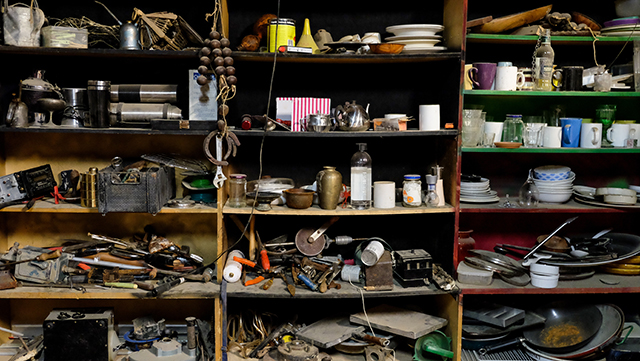Tips for raising chickens in the city
06/25/2019 / By Zoey Sky

As an urban prepper or homesteader, you are often limited by the small space that you live in. But if you’re willing to do a bit of hard work, you can raise chickens in your backyard even if you live in the city. (h/t to UrbanSurvivalSite.com)
Chickens are dual-purpose livestock that provide protein- and nutrient-rich eggs and meat, which are crucial when SHTF.
The basics of raising chickens
Raising chickens is an economical way of raising your own meat. You can buy common breeds of chicks for about $1.99 to $3.99.
You also need to save up for a one-time expense of at least $250 to build a sturdy chicken coop and run. If you have fence posts, scrap lumber, and wire in your homestead, you’ll spend even less as you set up a pen and shelter for your chickens. (Related: The Health Ranger’s guide to raising healthy, happy chickens without antibiotics.)
Take note that you need to learn how to butcher chickens. A beginner can eventually learn how to butcher poultry, and the only time-consuming task of preparing chicken is the removal of feathers. If you remove feathers by hand, it can take at least 20 minutes to get the job done.
However, before you buy chicks for your urban homestead, you need to double-check state and local laws. Those who reside in a right-to-farm state will have a lot more flexibility in keeping small livestock such as chickens, ducks, and rabbits.
Common chicken-keeping restrictions in urban and suburban areas may require a specific number of animals to be on the premises, such as six chickens or less. You may also need to raise “quiet” chicken breeds, with roosters prohibited entirely.
Mother Nature's micronutrient secret: Organic Broccoli Sprout Capsules now available, delivering 280mg of high-density nutrition, including the extraordinary "sulforaphane" and "glucosinolate" nutrients found only in cruciferous healing foods. Every lot laboratory tested. See availability here.
The prohibition of roosters means that none of the eggs can be fertilized, but it’s not advisable to sneak in a rooster into your chicken coop. If the rooster gets noticed, you could be fined or local officials could order you to remove your entire flock. One workaround for this issue is to look for a breeder who lives nearby. If you want to raise chicks, get in touch with a breeder and inquire about their roosters.
Give your chickens access to a dust bath to keep them smelling fresh and mite-free. The dust helps clean the chickens and asphyxiate pests. Get a container that’s at least 12 inches deep, 15 inches wide, and 24 inches long.
The dust bath needs the following ingredients:
- Builder’s sand
- Food-grade diatomaceous earth – the bag should have a label that says “for livestock feed”
- Soil that is chemical-, fertilizer-, and vermiculite-free
- Wood ash
Add equal parts of ingredients to the mixture, then refill the container when necessary. You’ll know your chickens are using the dust bath if the mixture can be found on the coop floor or if they emit a cloud of dust after shaking their whole body.
Quiet and dual-purpose chicken breeds
These chicken breeds are ideal for urban preppers and homesteaders because they’re quiet and they will provide you with both eggs and meat.
Ameraucana
Ameraucanas are dual-purpose birds that weigh at least seven pounds when mature enough to butcher. The hens produce delicious meat.
Ameraucana hens lay around 180 medium brown eggs yearly. Hens or roosters of this breed are usually quiet and amicable, unless they feel threatened.
Barred Rock Plymouth
These large brown chickens can lay about 200 small to medium brown eggs annually. Barred Rock Plymouth chickens also weigh about seven pounds when mature. This is a hardy breed that can tolerate both the heat and the cold well.
Mature chickens weigh about seven to eight pounds.
Buckeye
Buckeye chickens are a heritage breed and they may need an extra week or two to reach mature weight compared with other commercially available chicks.
Buckeye chickens are a quiet and very docile breed. However, Buckeye roosters will crow at least a few times daily. These chickens will lay at least 200 brown eggs each year. At maturity, they weigh about six to seven pounds.
Buff Orpington
Buff Orpingtons are easy to take care of. These chickens lay around 180 eggs annually. They’re a good winter time layer but they may slack off during the hot weeks of summer.
Rhode Island Reds
These chickens lay large brown eggs. While hens of this breed are expected to lay at least 250 eggs annually, they are not good sitters.
If you’re allowed to keep a rooster in your flock, purchase an incubator to hatch the eggs or get several Bantam chickens to sit on the eggs. Bantams are very maternal and they’ll take in abandoned eggs and sit on them.
Mature Rhode Island Reds weigh about six pounds.
Protecting your chickens from predators
Even urban chickens aren’t safe from predators like hawks, minks, rats, and snakes. Build a sturdy coop to protect your chickens from these predators.
Use hardware cloth to make a chicken run and cover any vents or weak spots in the chicken coop. Elevate the coop off the ground to prevent burrowing predators from breaking in.
Handling neighbor issues
Neighbors are another hurdle that you may face when raising chickens. Approach them properly to ease their worries about your livestock.
First, inform your neighbors that you are about to raise chickens and that you’re getting quiet breeds that will behave well. Some neighbors may want to check your coop to confirm that your chickens can’t escape and damage their yards. To seal the deal, offer to give them fresh eggs or meat.
Don’t let a small backyard stop you from raising chickens. Plan ahead and take good care of your chickens to ensure that you have access to fresh eggs and meat when SHTF.
Sources include:
Tagged Under: backyard chickens, chickens, food freedom, food independence, food supply, green living, homesteading, how-to, livestock, Poultry, preparedness, self sufficiency, self-reliance, survival, survival food, survivalist, sustainable living, urban homestead, urban prepper, urban prepping
RECENT NEWS & ARTICLES
COPYRIGHT © 2017 · SURVIVAL NEWS

















